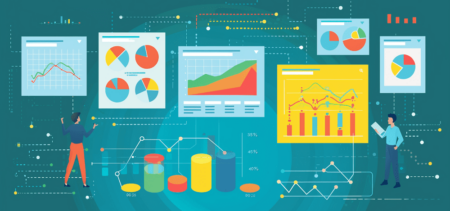The COVID-19 pandemic has impacted not only daily routines, jobs, and the way we spend our free time, but also multiple industries across the world. From healthcare to IT, businesses in most countries have started to experience the ever-growing need to adapt to the pandemic and its unpredictable ending. With everyone suddenly interested in digitizing and conforming to new rules, growing a business may have seemed like an unthinkable target during the crisis. Not so, however, for an industry that has proven that rising in the time of the pandemic is not only possible but also probable: e-commerce.
It should come as no surprise that the e-commerce sector has boomed during the COVID-19 crisis. With growth already taking place before the pandemic, and social distancing providing people with new reasons to shop from the comforts of their home, online shopping had every reason to keep expanding. The worldwide pandemic has accelerated digital transformations in numerous industries across the world, while also changing the way we buy and sell goods and services. In fact, this sector saw an important increase in its share of all retail sales, from 16 percent to 19 percent in 2020.
How Long Will the Wind of Change Last?
The COVID-19 pandemic proved to be not only an unprecedented crisis but also an extensive one. Had it been a shorter crisis, the pandemic might have brought only temporary changes, especially when it comes to altering shopping habits across the world. Almost two years later, however, the crisis is far from being over. As a consequence, shopping behaviors have grown accustomed to the new rules and habits, and we, in turn, have become more adapted to the digital age.
According to Mastercard’s Recovery Insights report, as people started to work from home, they also turned to online shopping. Bricklin Dwyer, Mastercard chief economist and head of the Mastercard Economics Institute, says the shift comes with multiple implications for countries and companies around the world. According to him, those that have adopted digital transformations will continue to reap the benefits. “Our analysis shows that even the smallest businesses see gains when they shift to digital,” he added. However big the gains for these countries and companies, one thing is certain: 20-30% of the shift to e-commerce is expected to be permanent, according to the report.
The Fastest-growing Group of Online Shoppers
Bricklin Dwyer is not alone in saying that at least part of the shift to e-commerce is expected to be permanent. Consumers everywhere are now adopting new digital trends and channels, and this exposure to different ways of shopping is likely to have a lasting impact. However, the changes came with multiple surprises. One of these surprises may be the fact that baby boomers are now the fastest-growing group of e-commerce shoppers. Americans aged 65 and older are now buying their products and services online, and they spent 49% more on the web in 2020 than they did the previous year.
Baby boomers will still visit brick and mortar stores after the pandemic comes to an end, but they are also likely to continue using online services in the future. That is precisely why companies around the world will continue to invest in new digital technologies and innovations. With baby boomers now joining the digital shopping age, retailers may need to do their best to make their shopping experiences as easy and painless as possible. This, however, is especially true for some categories, because older Americans have shifted their purchasing habits to the digital side especially when buying personal care products, pet supplies, clothing items, and groceries.
Towards a Digital Future
The shift to e-commerce was imminent, with or without the COVID-19 pandemic. However, the global crisis seems to have acted as a catalyst, boosting online shopping around the world both in 2020 and 2021. While some trends, like the switch to more local stores, might partially reverse the digital trend, e-commerce is definitely here to stay. In fact, US e-commerce sales are expected to grow 13.7% this year, reaching a total of $908.73 billion. While many traditional stores are bound to meet the new digital challenge, both retailers and consumers are probably already looking back at 2020 as the moment that changed everything.
































